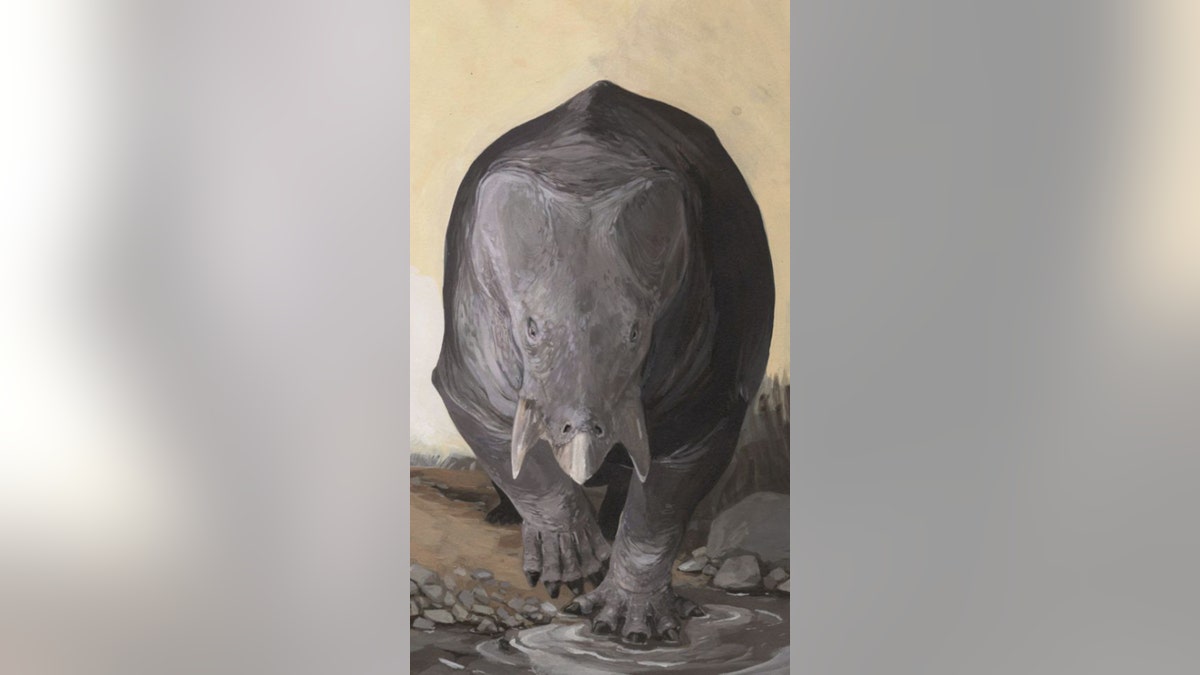
Credit: Karolina Suchan-Okulska/Science in Poland
Scientists have discovered the fossils of a massive "mammal-like" reptile that roamed the Earth 210 million years ago, with its weight of 9,000 kg (19,841 lbs.) making it the largest four-legged non-dinosaur to have inhabited the Triassic period.
The fossils also provide one of the latest known examples of a giant herbivore, suggesting that this mammalian ancestor was able to survive during the era when dinosaurs had become dominant.
Publishing in the influential Science journal, the team of Swedish and Polish paleontologists report that the fossils they excavated belongs to a previously undiscovered species, which they've named Lisowicia bojani (after the Polish village in which they were found).
CLICK HERE FOR MORE FROM THE SUN
The Lisowicia bojani belongs to a group of prehistoric animals known as dicynodonts, which were plant-eating reptiles that walked on four legs and shared many of the traits of their distant ancestors: the mammals that inhabit the Earth today (including humans).
Previously, it was believed that the dicynodont group first emerged around 252 million years ago and began dying out in the Late Triassic (from around 220 million years ago), when dinosaurs started becoming the dominant group.
However, the team were able to date the newly discovered fossils to between 210 and 205 million years ago, making it 10 million years younger than previously discovered dicynodont samples.
Interestingly, the fossils the team unearthed would have belonged to an animal that weighed around 9,000kg, was 4.5 meters long, and 2.5 meters tall.
Not only is this 40% heavier than any previously found dicynodont, but as Uppsala University's Dr. Grzegorz Niedzwiedzki explains, it puts the Lisowicia bojani in the same league as as the dinosaurs.
"Dicynodonts were amazingly successful animals in the Middle and Late Triassic," he says.
"Lisowicia is the youngest dicynodont and the largest non-dinosaurian terrestrial tetrapod from the Triassic. It's natural to want to know how dicynodonts became so large. Lisowicia is hugely exciting because it blows holes in many of our classic ideas of Triassic 'mammal-like' reptiles."
First begun in 2005 but only written up today, the excavation of the Lisowicia bojani in Poland reveals for the first time that mammal-like dicynodonts lived at the same time as the sauropodomorph group of dinosaurs, which includes the Diplodocus and Brachiosaurus species.
And for those interested in evolution, the excavation also proves that some characteristic anatomical features of mammals – such as upright limbs – were also present among dicynodonts and similar herbivorous reptiles.
It is therefore a significant finding, one that forces prehistorians and paleontologists to revise their theories on the Earth's Triassic period and on the evolution of mammals.
As co-author Dr. Tomasz Sulej concludes, "The discovery of such an important new species is a once in a lifetime discovery."
This story originally appeared in The Sun.